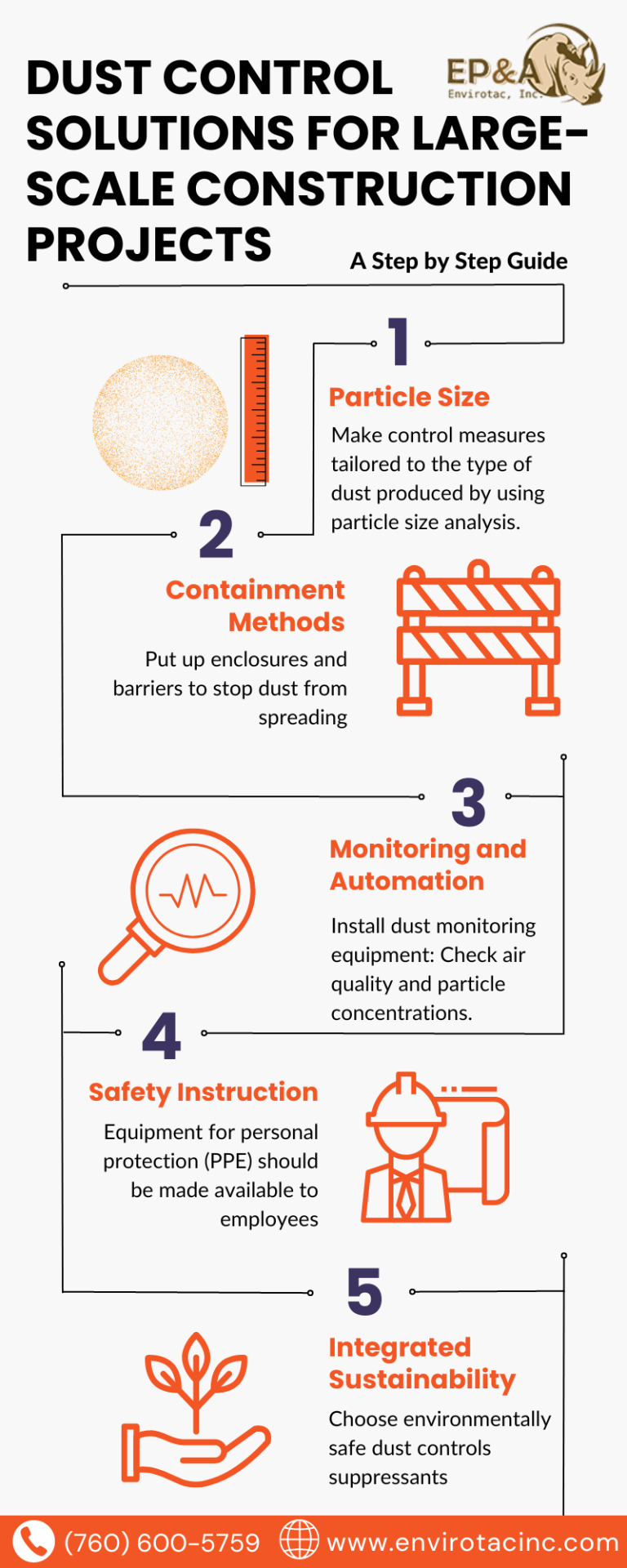Text
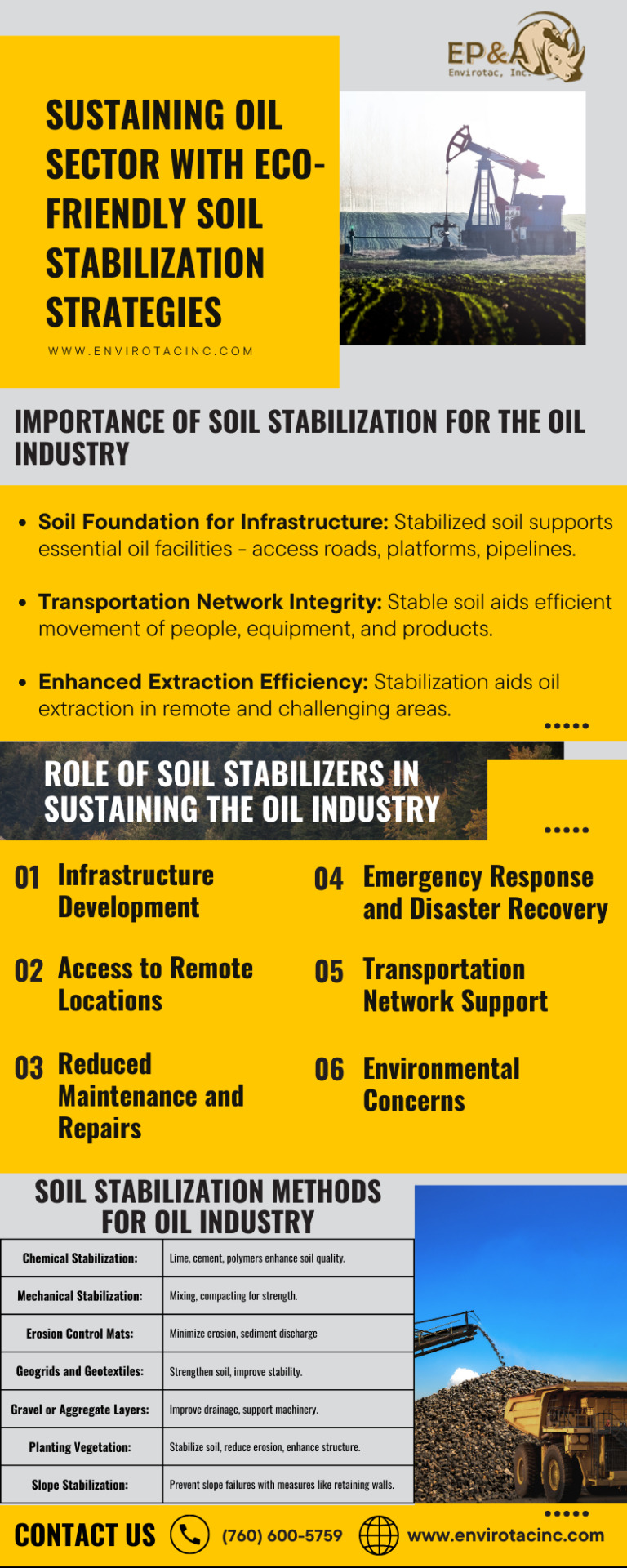
Sustaining Oil sector with Eco-Friendly Soil Stabilization Strategies
0 notes
Text
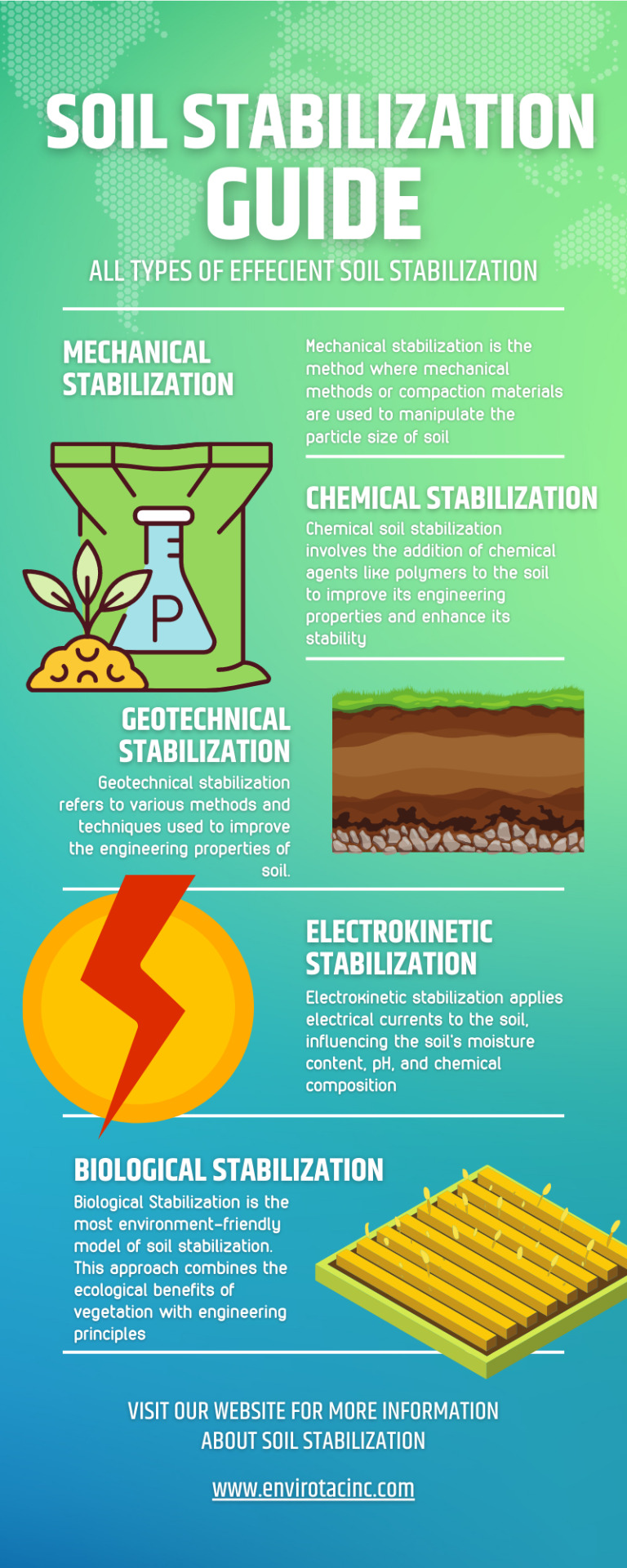
Soil Stabilization Guide - All Types of Soil Stabilization Methods
0 notes
Text
Soil Stabilization Guide: All Types Of Soil Stabilization

Soil Stabilization is one of the oldest methods there are in the industry to prepare the soil for a good construction process and result. Soil stabilization refers to improving the engineering properties of soil to make it more stable and suitable for construction purposes.
In a more traditional and usual form, soil stabilization is associated with the use of water to bind the soil together and strengthen it to make it more suitable for construction purposes but usage of water is not a successful method since it can bring about major fatalities on drying of it.
Therefore, several methods are available for soil stabilization, and the choice of method depends on factors such as the soil type, project requirements, and environmental conditions
Mechanical Stabilization
Mechanical stabilization is the method where mechanical methods or compaction materials are used to manipulate the particle size of soil in order to make it more suitable for specific construction purposes since every construction project requires different types of soil sizes to stay strong on it.
In this method, large mechanical equipment is used to convert the soil more suitable by applying compressive force. Here are the following methods included:
Compaction
This technique involves applying mechanical force to increase the density of soil, reducing air voids, and improving load-bearing capacity.
Compaction can help improve the load-bearing capacity, drainage, and settlement of soil by applying mechanical force to it. Compaction cannot be used for all types of soils but it is considered best on granular soil for further construction purposes. Compaction is further of two types.
Dynamic Compaction
In this compaction method, High-energy impacts from heavy machinery or dropping weights are used to compact loose or weak soil layers.
Vibro-Compaction
In this compaction method, Vibratory probes including rollers and plate compactors are inserted into the soil to densify loose granular soils by reducing pore space.
Chemical Stabilization
Chemical soil stabilization involves the addition of chemical agents to the soil to improve its engineering properties and enhance its stability so that it can be made best suitable for construction purposes.
These agents chemically react with the soil particles, altering their properties and creating a more stable soil matrix. Here are some common methods of chemical soil stabilization:
Polymer Stabilization
Polymer Stabilization is one of the best methods of soil stabilization. Polymers, such as polyacrylamide or latex emulsions, are added to the soil.
Polymers bind the soil particles together, enhancing cohesion, reducing permeability, and increasing strength. These chemicals are further segregated into two parts where one is totally synthetic and best for binding the soil together for best results and is dense in nature which does not let the soil give up on the load it bears so forth.
Whereas, the other type of polymer stabilizer is completely environmentally friendly which doesn’t harm the soil properties, and does the binding job well although, it isn’t as effective as the synthetic polymer used. Polymer stabilization is effective in improving the stability and performance of fine-grained soils, such as silts and clays.
Lime Stabilization
Lime Stabilization is another very popular form of chemical stabilization. Lime, in the form of quicklime or hydrated lime, is added to the soil to chemically react and improve its strength, plasticity, and long-term stability.
Lime stabilization is a versatile and widely used method for improving the engineering properties of soils. It offers several advantages in terms of strength enhancement, reduced plasticity, and improved stability.
Cement Stabilization
Cement, typically in the form of Portland cement, is mixed with the soil to create a cementitious matrix, enhancing its strength and durability.
It offers several advantages, including increased strength, reduced plasticity, and enhanced durability. The dosage of cement to strengthen the soil is totally dependent upon the properties of the soil, the requirements of the project, and various relevant factors.
Fly Ash Stabilization
Fly ash, a byproduct of coal combustion is mixed with soil to improve its strength and reduce plasticity. It is commonly used in subgrade stabilization.
The presence of silica, alumina, and other similar compounds is quite helpful in this process as they interact with the soil to enhance its properties to bring the best out of the stabilized soil in such a manner.
Bitumen Stabilization
Bitumen or asphalt emulsion is mixed with soil to enhance its strength, moisture resistance, and cohesion. Bitumen is a viscous, black, and sticky material derived from petroleum, commonly used in road construction.
This stabilization method is best for increasing the strength, durability, and cohesion of the soil to facilitate reliable construction.
Geotechnical Stabilization
Geotechnical stabilization refers to various methods and techniques used to improve the engineering properties and stability of soils. It involves the application of physical, mechanical, or chemical means to enhance soil strength, reduce deformability, control settlement, mitigate erosion, and increase overall stability. There are various types of geotechnical stabilization methods that can turn out great for soil and construction.
Geosynthetic
Geosynthetics contain geotextiles, geogrids, or geocells that are used to reinforce the soil and enhance its stability by distributing loads and reducing soil movement.
These geosynthetics enhance stability, prevent erosion, improve drainage, and control soil movement.
Geotextile Tubes
Large geotextile tubes filled with soil, sludge, or other materials are used as structural elements for erosion control, shoreline protection, or slope stabilization.
They provide a versatile solution for containment, dewatering, shoreline protection, and sediment management applications
Soil Nailing
Steel or fiberglass reinforcing elements, called soil nails, are drilled into the soil to provide tensile strength and prevent slope instability. Soil nailing is commonly used in applications such as slope stabilization, excavation support, and retaining wall construction.
Soil Anchoring
In this method, high-strength cables or rods are anchored into the soil to provide lateral support and prevent soil movement. There are various types of Soil Anchors used including deadman anchors, drilled anchors, and screw anchors.
Biological Stabilization
Biological Stabilization is the most environment-friendly model of soil stabilization. This approach combines the ecological benefits of vegetation with engineering principles to provide erosion control, slope stabilization, and soil improvement.
This is the best sustainable and environment-friendly approach to soil stabilization for construction purposes.
Vegetation
Planting suitable vegetation helps stabilize the soil through root systems that bind the soil particles, reducing erosion and enhancing slope stability.
Native plants or specially selected species with deep root systems and good soil-binding capabilities are often chosen for their ability to stabilize the soil effectively.
Bioengineering
Natural or synthetic materials, such as biodegradable blankets or mats, are used in combination with vegetation to provide erosion control and slope stabilization.
Bioengineering includes various techniques like brush layering, wattling and cior matting which are used to vegetate the soil to stabilize it for the best results.
Although this method might take longer than usual to give results, it is considered best for the environment other than polymer stabilization which is the best solution for soil stabilization for time constraints with the best environmental benefits.
Electrokinetic Stabilization
Electrokinetic stabilization applies electrical currents to the soil, influencing the soil's moisture content, pH, and chemical composition. It can improve soil strength, reduce swelling, and control moisture migration.
Conclusion
Each soil stabilization method has its advantages and limitations. The selection of the appropriate technique depends on the specific soil conditions, project requirements, and cost-effectiveness.
A thorough site evaluation, laboratory testing, and consultation with geotechnical experts are essential to determine the most suitable soil stabilization approach for a particular project.
#soil stabilization#soil stabilization guide#types of soil stabilizations#soil#road construction#construction
0 notes
Text
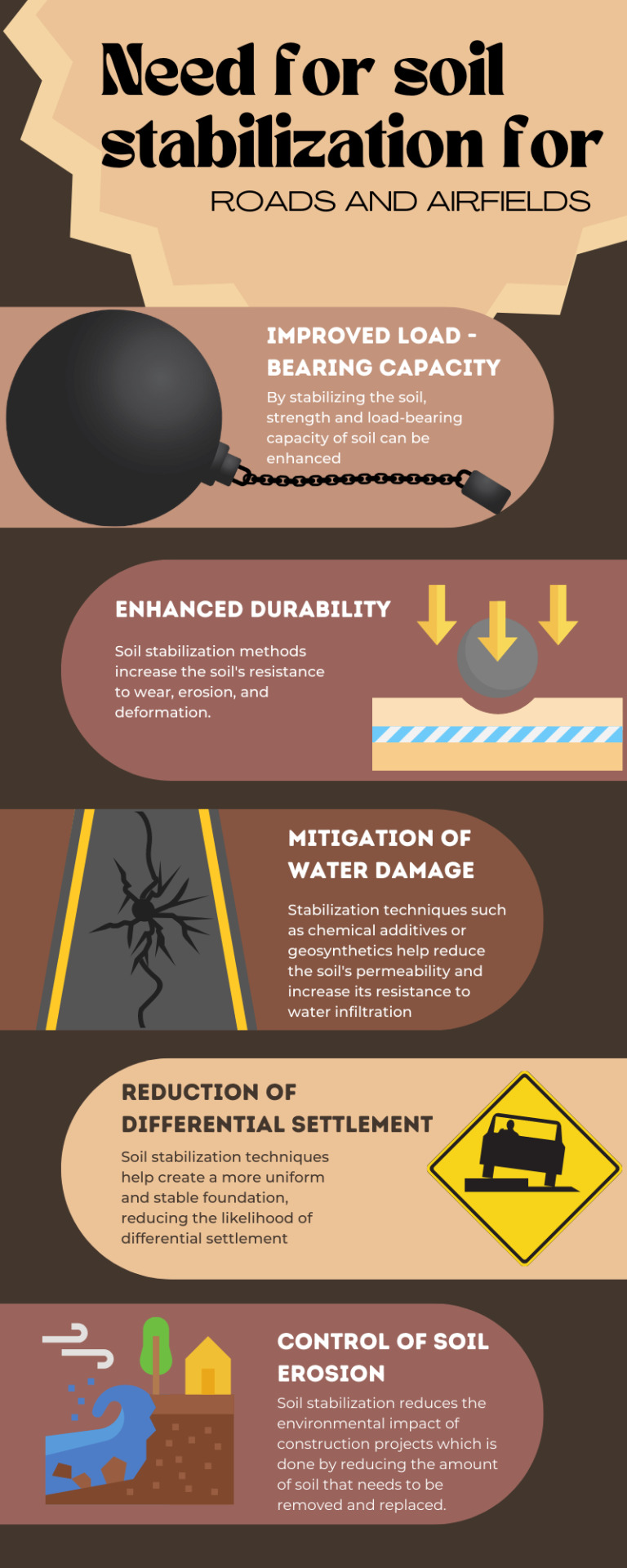
Learn what is the need of soil stabilization for roads and airfield
0 notes
Text
What Is The Need Of Soil Stabilization For Roads And Air Fields?

Soil stabilization is a cost-effective solution for many construction projects that are undertaken. Soil stabilization is a process that involves the improvement of soil properties by implementing chemical and mechanical techniques.
The goal of soil stabilization is to maintain or improve the stability of weak soils to achieve engineering goals. Binders such as cement and lime are used to enhance stabilization in soils, developing their engineering properties and generating an improved construction material.
Soil stabilization is a technique used to improve the engineering properties of soil to make it more suitable for construction purposes, such as roads and airfields. It involves various methods and materials that enhance the strength, durability, and load-bearing capacity of the soil.
The cost of soil stabilization varies depending on the method used Soil stabilization is essential for roads and airfields for several reasons:
Improved Load-Bearing Capacity
The load-bearing capacity refers to the capacity and capability of the soil to withstand wear and tear and load without failure. The bearing capacity of a shallow foundation is calculated by multiplying the bearing capacity factors with the soil strength parameter and adding the contributions from the tip and the shaft of the foundation.
By stabilizing the soil, its strength and load-bearing capacity can be enhanced. This is crucial for roads and airfields that must support heavy traffic loads, including vehicles, aircraft, and their associated equipment.
Stabilization prevents excessive settlement, rutting, and deformation of the soil, ensuring the stability and longevity of the infrastructure. With soil stabilization, soil's swell and shrink characteristics are also controlled for better outcomes.
Enhanced Durability
Unstable or weak soil can deteriorate quickly under the stresses imposed by traffic or aircraft movements. Soil stabilization methods increase the soil's resistance to wear, erosion, and deformation.
This improves the durability and performance of roads and airfields, reducing maintenance requirements and costs over time. Soil stabilization provides toughness to the soil with an improved gradation of soil.
This process of improving soil is called soil modification. Soil stabilization also increases pavement thickness which improves durability to another level hence reducing the risk of structural failure.
Mitigation of Water Damage
Unstable soil can be highly susceptible to water damage, especially in areas with high rainfall or poor drainage. Stabilization techniques such as chemical additives or geosynthetics help reduce the soil's permeability and increase its resistance to water infiltration.
Ionic soil stabilization is a proven method of mitigating water damage by swelling. It is an old and non-traditional method from the 1950s and 1960s.
This minimizes the risk of water-related issues like erosion, swelling, and loss of soil strength, which can lead to structural failures. Moisture changes hence come as no threat to the soil if soil stabilization is performed efficiently.
Reduction of Differential Settlement
Differential settlement occurs when different sections of a road or airfield experience varying degrees of settlement. This can result in uneven surfaces, bumps, or depressions that can be hazardous for vehicles or aircraft operations.
Differential settlement is caused by a number of factors, including differences in the type of soil beneath a foundation. Soil stabilization techniques help create a more uniform and stable foundation, reducing the likelihood of differential settlement and ensuring a smooth and safe travel surface.
A few of these techniques include reducing the moisture of soil, usage of polymer stabilizers, and grouting which will provide a predictable degree of improvement to the soil.
Control of Soil Erosion
Unstabilized soil is prone to erosion, especially during heavy rains or windy conditions. This erosion can lead to the loss of soil particles, the formation of gullies, and the degradation of the road or airfield.
Stabilization methods like geosynthetics or chemical additives help control erosion by improving the cohesion and stability of the soil, preventing its displacement and decay by water or wind
Since environmental wear and tear is a key factor behind soil erosion as well, Soil stabilization reduces the environmental impact of construction projects which is done by reducing the amount of soil that needs to be removed and replaced.
Conclusion
Overall, soil stabilization is necessary for roads and airfields to ensure the infrastructure's stability, durability, and safety. By improving the soil's engineering properties, stabilization techniques provide a solid foundation that can withstand heavy loads, resist environmental forces, and maintain a reliable travel surface for vehicles and aircraft.
0 notes
Text
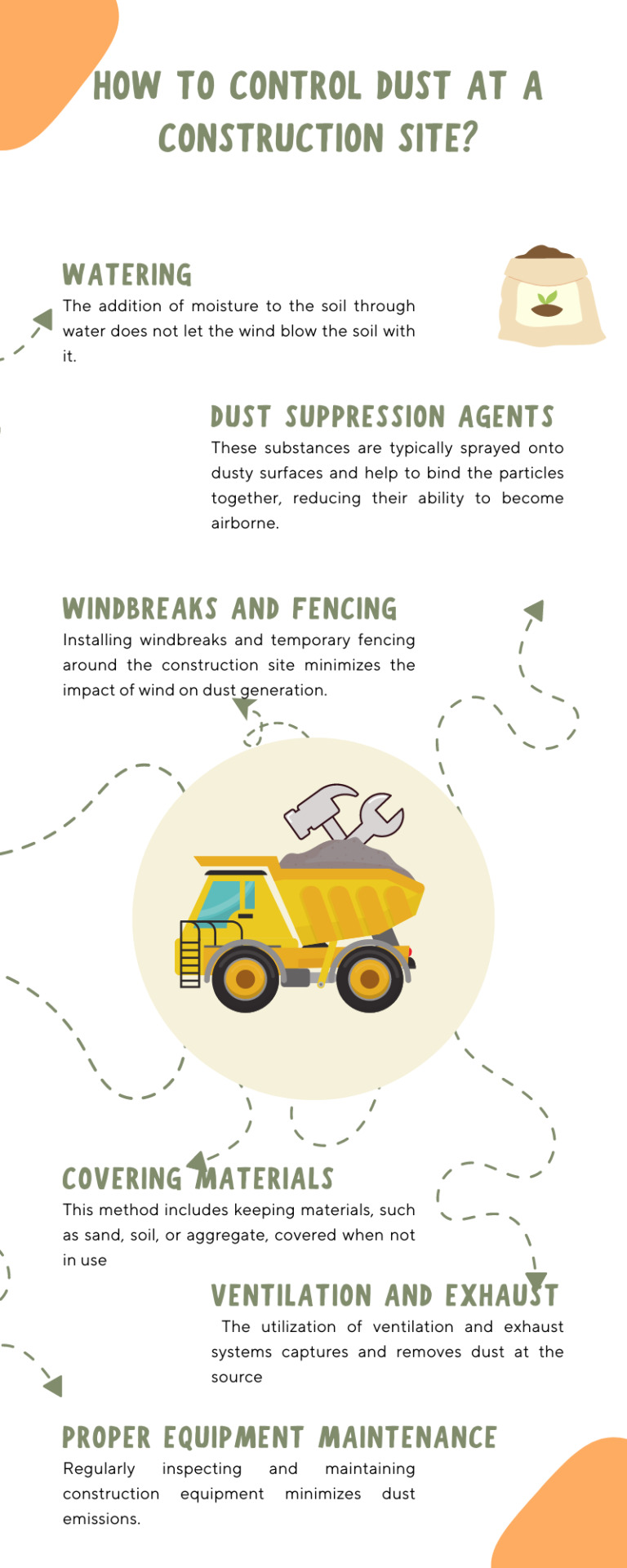
Dust control is quite crucial during construction for best results and lets no harm to the people.
0 notes
Text

How To Strengthen Slope Stability With Soil Stabilization
0 notes
Text
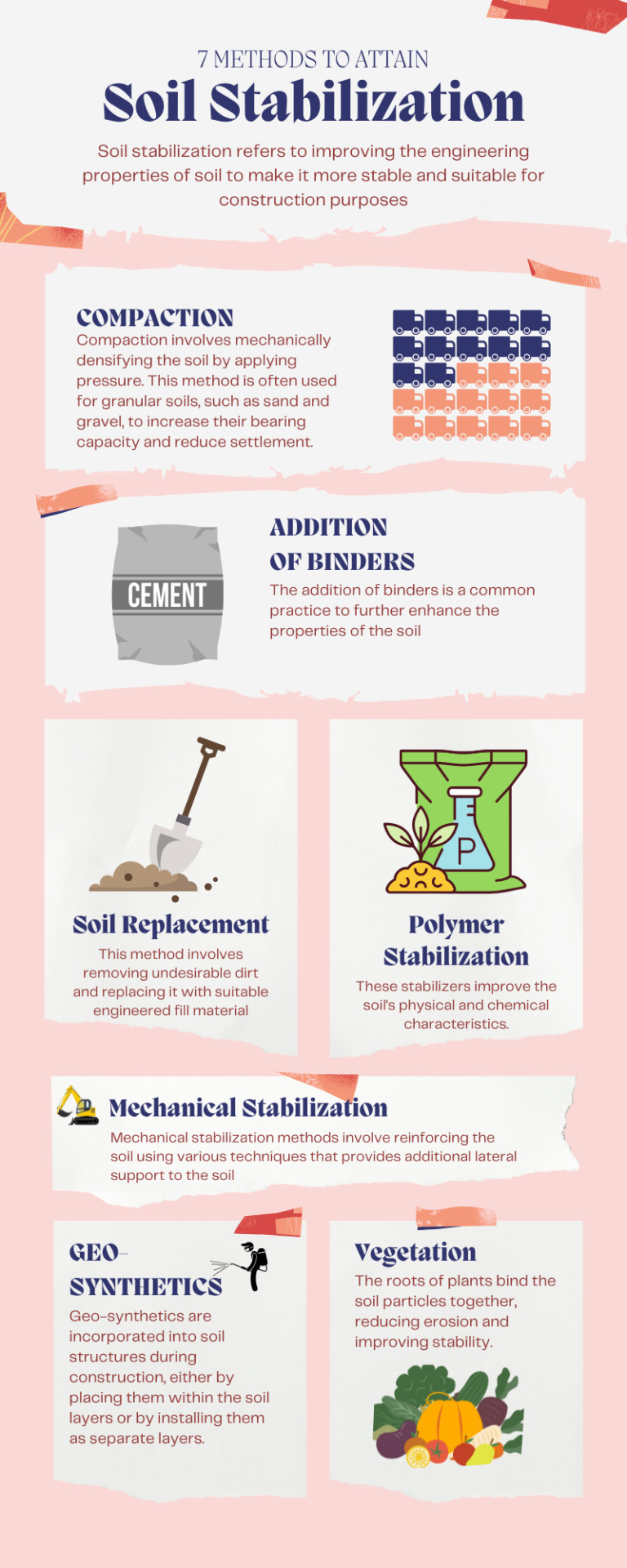
Here are 7 methods to attain soil stabilization
1 note
·
View note

